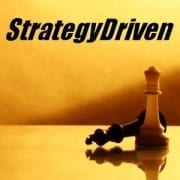6 Workable Strategies for Businesses to Differentiate Their Brand

Now, knowing HOW TO differentiate yourself from the rest is a daunting process. But once done, it gives your brand the upper hand and keeps everyone, including your customers, happy. For that matter, it’s crucial to know how to differentiate your brand from your competitors so that your brand strikes out positively.
So, exactly how can you put your brand on a high-reaching pedestal through differentiation? Offer a vast selection? Possibly. Look better? Perhaps. Compete on pricing? Not really! There are several ways brands can differentiate themselves – and none of them involve lowering your standards. Most of the strategies we’ll touch on in this article are actually about improving yourself. So, let’s discuss six effective ways to differentiate your brand from the competition:
1. Nurture and generate brand advocates
Brand advocates are people who are so enthusiastic about your products/services that they’ll tell their family, friends, and coworkers about it. They are also known as “brand evangelists” or “brand ambassadors.” But they begin promoting once they are convinced of the value you provide. They do this on their initiative, with no plea from your company. Consider it a positive word of mouth promotion with more persuasion from the advocates. So, if you wish to appeal to these brand advocates, offer them freebies and promotional items to nurture long-term relationships. You can also join hands and run referral programs and contests to help reach out to potential clients and customers. Indeed, this is an excellent and low-cost method of marketing your brand. Besides that, every brand advocate brings in three new customers on average.
2. Give your pricing a whirl
When done correctly, this can also be an effective technique of differentiation. On one end of the spectrum, a business can strive to be known as the “low price leader,” providing customers with exceptional value. On the other hand, they could be placed as a high-priced premium brand.
In some cases, an effective brand differentiation strategy can allow a brand to command a higher price premium than it would otherwise be able to. Walmart stores, for instance, are characterized by low prices and good virtues, which have allowed the company to change retail fundamentally.
On the other hand, Starbucks has persuaded customers that there is value in paying significantly more for premium coffee. So, learn from this and be active.
3. Solve a real problem for customers
Create detailed buyer personas to determine which issues you should focus on solving. Buyer personas offer insight into your customer base’s main goals, challenges, interests, and pain points. You can then utilize these insights to identify critical issues your competitors aren’t addressing. Once you’ve identified the unsolved problems, you have a few options for resolving them. However, affirm it with your customers before instituting it once you’ve devised a strategy. Undoubtedly, this is an excellent strategy to attain brand differentiation.
4. Have variations and be socially responsible
This strategy is a great way to set yourself apart from the competition. But you must know where to offer variations in your product line. Once you’ve determined that your product is infinitely superior, expand its offerings. Take, for example, color. If your competitor offers a competing product in six colors, figure out how to provide your version of the product in ten colors. It’s a particularly effective strategy if you sell your products on a marketplace such as eBay or Amazon.
Other than that, according to a CGS study, nearly half of consumers were willing to pay more for socially conscious products. Donations to charity, community programs, sustainable manufacturing, and fair wages and benefits for your employees are all examples of social responsibility. It demonstrates that you care about people, whether workers or customers. Besides, customers prefer to do business with companies they trust.
5. Lean into your market
There’s no way you’ll be able to appeal to everyone out there. Everyone has different needs, interests, and motivations for purchasing. It isn’t viable to be so broad in your strategy that people become perplexed by your message. You should “niche down” instead. In a sea of generics, be the expert. Your niche segment also allows you to market how your brand differs – and outperforms – your competitors. Provide more exceptional value to your customers than they anticipate from you. Go above and beyond to meet their requirements. Determine what your customers require from you and what is most important to them. It could be how rapidly an issue is resolved, such as an exchange or return– knowing these things will boost your reputation and get you positive feedback.
6. Never compare your brand
H&M does not compare itself to Rolls Royce, nor does Rolls Royce compare itself to Mercedes-Benz Why? Because they are two completely different brands selling products at opposite ends of the spectrum.
88% of buyers now conduct online product research before making a purchase. Amazon reviews, YouTube, and other comparison websites have made it easy for people to learn everything there is to know about you before committing to you. Nothing, however, will reduce your perceived value more than being placed directly next to a competitor. You don’t need to draw attention to your competitors because people are interested in your brand. So, maintain a laser-sharp focus on yourself rather than your competitors in your marketing initiatives.
Conclusion
Lastly, you must understand that not everyone who sees your brand will love it.
Ultimately, most of the strategies above boil down to delivering a world-class customer experience. That leads to superior customer satisfaction, providing retention and long-term sustainable growth. Safe to say, differentiating your business is all about being outstanding and unique while presenting yourself to potential customers who adore you. Finding ways to distance your brand from its competitors will, of course, require a lot of consistent hard work and research. But the results are well worth it.












Leave a Reply
Want to join the discussion?Feel free to contribute!